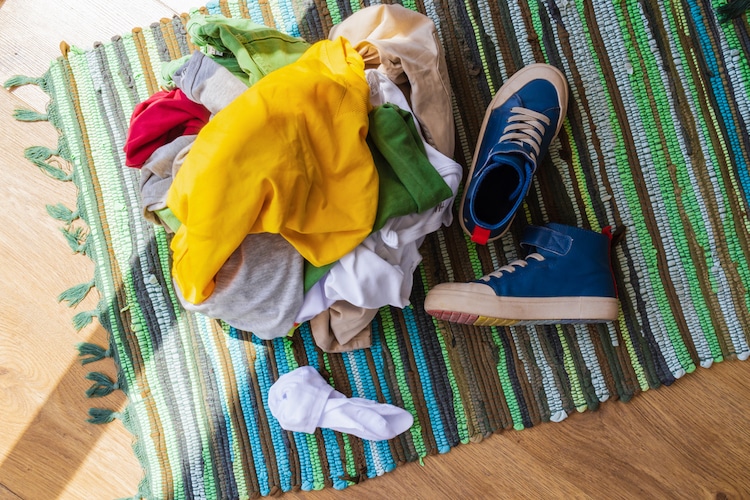
Photo: R.Natalia/Depositphotos
We all have that one place in our home that could use decluttering. It could be a table that’s a landing pad for everything once you walk in the door, or it could be that one chair that absorbs all of the clothes that somehow never make it to your closet. Regardless of whether you have a little or a lot of clutter, you don’t have to let it bring you down. Let these decluttering tips help make it easy to tidy up.
There are different levels of clutter. Some are the everyday messes that you can remove in seemingly no time. But then there is systemic clutter—you have too much of something, for instance. In that case, you’ll want to take a different approach and consider whether or not you need it in your home.
Scroll down for decluttering tips to help motivate you and offer strategies for putting things away.
Learn about the common types of clutter and tips for decluttering your home.
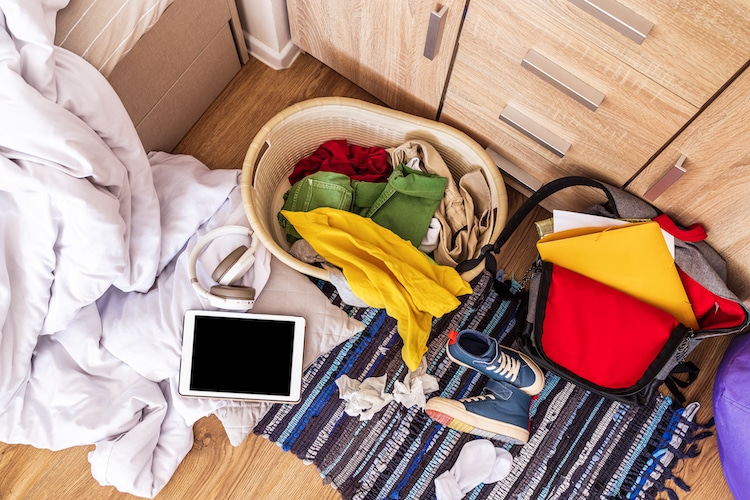
Photo: R.Natallia/Depositphotos
Types of Home Clutter
You might look at clutter and see it as all the same mess, but there is nuance within each pile of stuff. Figuring out where your clutter fits in these categories can help you decide what to do about it. Here are some common types of clutter that might be hanging around your place.
- Clutter without a home. These are objects that don’t have a permanent space in your home, so they always look out of place. There’s often a reason for this—you bought it and don’t need it yet, or it’s something that you don’t intend to keep for very long.
- Abundance clutter. If you like to buy items in bulk, then you’re likely familiar with this type of clutter. Abundance clutter is when you have multiples of one thing. This could be beauty products, food, or anything else you use regularly and intend to use more of.
- Aspirational clutter. Have you ever bought a book thinking that you’ll read… someday? Or the supplies for a craft project you eventually want to make? This is known as aspirational clutter. The problem with it is that, often, our aspirations remain unfulfilled and the items collect dust.
- Sentimental clutter. This is some of the most challenging clutter to get rid of. It’s photos, special knickknacks, and any other item that has sentimental or nostalgic value. Disposing of it can make you feel guilty, so it’s easier to hang on to it.
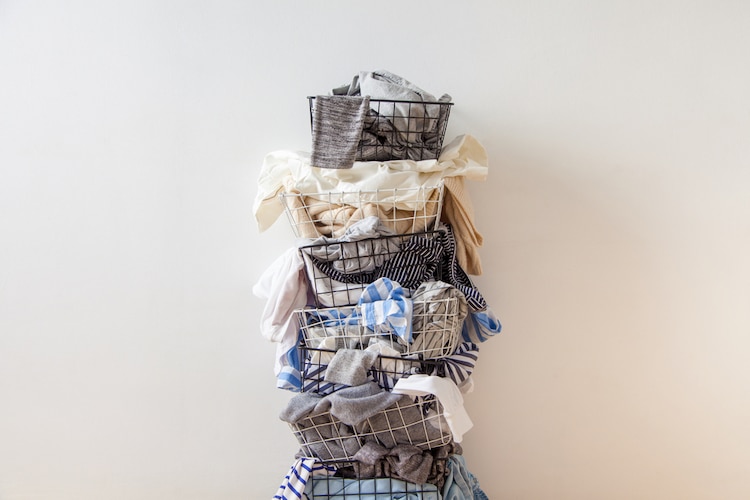
Photo: [email protected]/Depositphotos
Tips for How to Declutter Your Home
The following tips won’t apply to every type of clutter that’s in your home but will give you a place to start. Regardless of the type of clutter, it’s important to remember that decluttering is a gradual process. Be patient with yourself and celebrate the small victories along the way. You’ll enjoy the benefits of a more organized home before you know it.

Photo: SeventyFour/Depositphotos
Start with a small area.
Begin your decluttering by homing in on a space. It could be a specific room, a closet, or even a small corner of your house. By breaking down decluttering into smaller tasks, it’ll be more manageable and give you the momentum for future progress.
Set a timer.
Does the thought of an all-day decluttering fill you with dread? Building on the idea of starting small, allocate a specific amount of time for decluttering. Having a time limit helps you stay focused and prevents burnout. You’ll be amazed at how much you can get done in 10 or 20 minutes.
Adhere to the one-in, one-out rule.
This is helpful for places like your closet. Commit to removing an existing item in your home before you can get something new. (Donating a jacket before you buy a new one, for instance.) This will help ensure that clutter doesn’t accumulate over time.
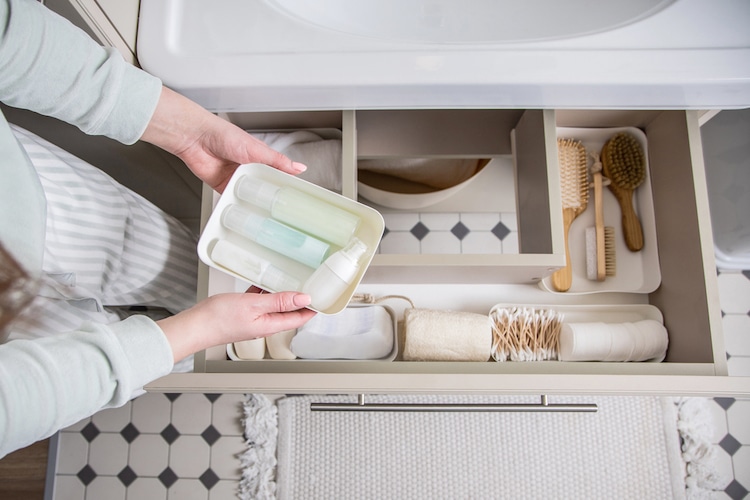
Photo: [email protected]/Depositphotos
Create donation and discard piles.
Assign separate areas or bins for the things you want to donate and the items you intend to throw away. Doing this will encourage action. But, keep in mind that it’s always better to limit what goes in the landfill, so try to keep that pile small.
Clear off the flat surfaces.
Get an easy win when you clear countertops, tables, and desks from clutter. These areas are often clutter magnets, and just a few minutes a day can leave them looking tidy.
Practice the “one-minute rule.”
How long did it take you to clear that counter? A good rule of thumb is that if you can complete a task in a minute or less—such as folding a blanket or putting a dish in the dishwasher—do it immediately. This prevents small tasks from piling up and becoming overwhelming.
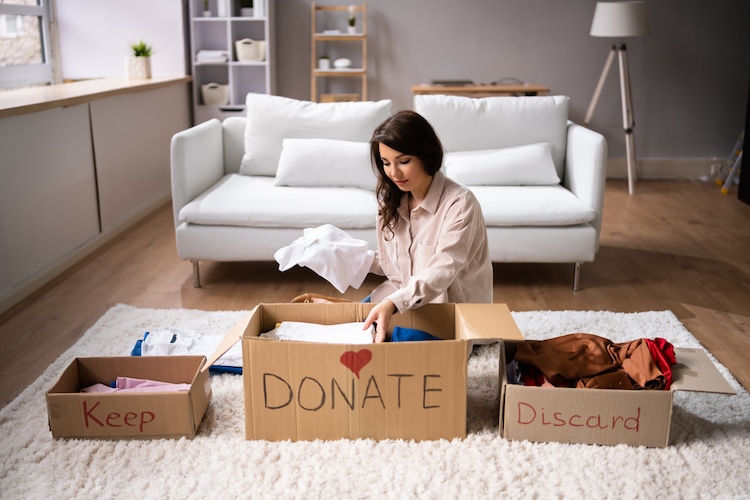
Photo: AndreyPopov/Depositphotos
Sort things into categories.
When tackling a larger area like a closet or a room, sort items into categories such as clothes, books, electronics, or kitchenware. This method makes decision-making easier and allows you to see how much you have of each type. From there, you can consider what/how you intend to organize them.
Storage solutions are your friend.
Invest in storage containers, baskets, or organizers to help keep items in order. They will not only keep things tidy, but they are another opportunity to decorate your space and imbue it with your personality.
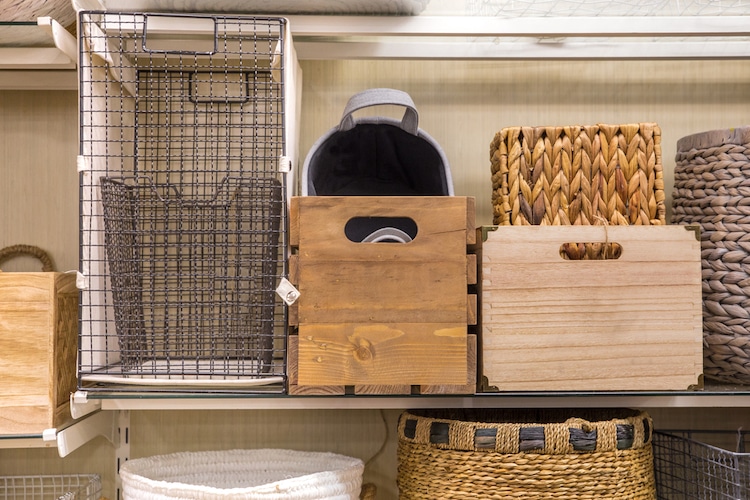
Photo: littleny/Depositphotos
Digitize when possible.
Reduce paper clutter by opting for e-delivery for bank statements and other recurring documents. For the documents that you already have, scan them and store them on a digital device or the cloud. This will reduce your physical storage needs while keeping important information easily accessible.
Celebrate wins.
Everyone loves a before and after. Document your progress before and after you declutter. This will provide a visual representation of your accomplishments.
Related Articles:
15 Terrarium Kits That Have Everything You Need To Bring Some Green Into Your Home
This YouTube Channel Takes You on Fascinating Tours of Tiny Homes Around the World
15 Bunches of Dried Flowers To Fill Your Home With Beautiful Blooms Forever
